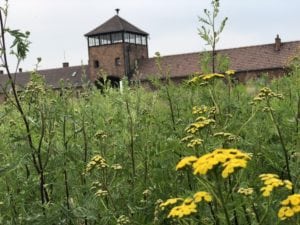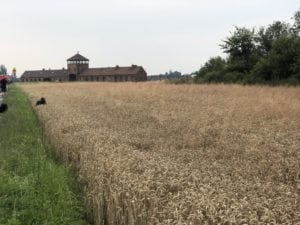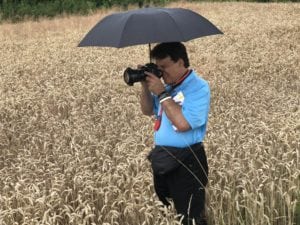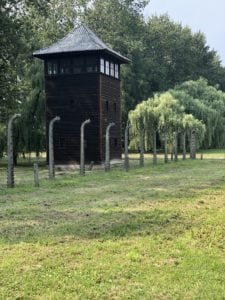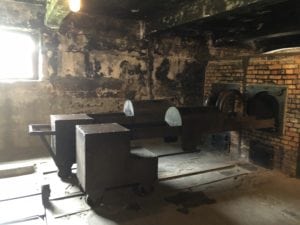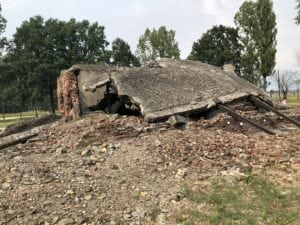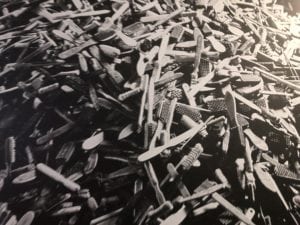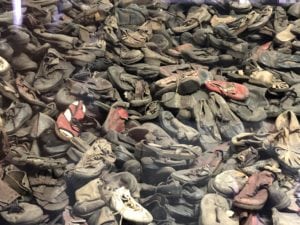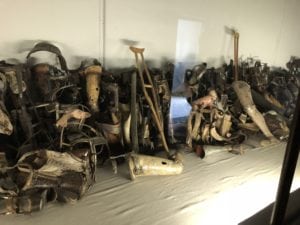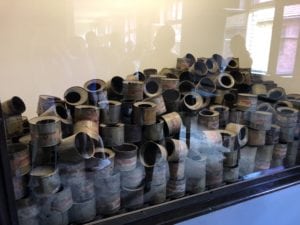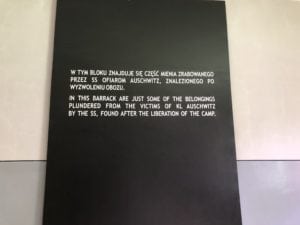 (Editor’s note: This is the fifth blog entry by Louisville teachers Fred Whittaker and Ron Skillern from their tour of Holocaust sites in Poland with a group of students and instructors from Classrooms Without Borders (CWB). This post, which is from day 7 of the seminar, covers CWB’s visit to Auschwitz-Birkenau concentration camp, the largest of its kind established by the Nazi regime for achieving the Final Solution. A virtual factory for human destruction, victims were worked or gassed to death. They were subjected to inhumane science experiments.Their bodies were incinerated; their belongings harvested. The day of CWB’s visit was a beautiful one, lending a stark irony to the Holocaust experience.)
(Editor’s note: This is the fifth blog entry by Louisville teachers Fred Whittaker and Ron Skillern from their tour of Holocaust sites in Poland with a group of students and instructors from Classrooms Without Borders (CWB). This post, which is from day 7 of the seminar, covers CWB’s visit to Auschwitz-Birkenau concentration camp, the largest of its kind established by the Nazi regime for achieving the Final Solution. A virtual factory for human destruction, victims were worked or gassed to death. They were subjected to inhumane science experiments.Their bodies were incinerated; their belongings harvested. The day of CWB’s visit was a beautiful one, lending a stark irony to the Holocaust experience.)
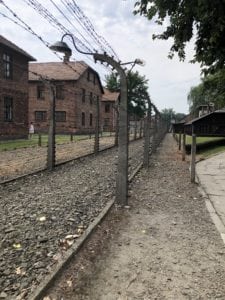
Barb wire fencing at Auschwitz I, the original part of the camp. It served as a Polish military barracks before the war
The Auschwitz Museum at Camp I exhibits staggering piles of brushes, pots and pans, eye glasses, suitcases — anything taken from the victims — plus a empty cans of Zyklon B, the gas used to kill them



